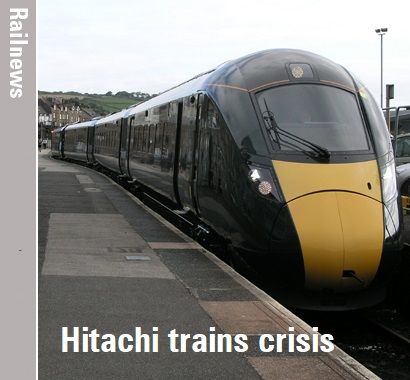EXCLUSIVE
THE return of all Hitachi-built Intercity Expresses to normal service is ‘a long way off’, according to notes of an internal industry briefing seen by Railnews. The document also reveals that two types of cracking have been discovered and that welding to repair the damage will be a ‘highly specialist job’.
One type of cracking affects the aluminium lifting points, as disclosed by the Rail Delivery Group yesterday, and the other also explains third-party reports that the yaw damper, which is linked to the suspension, has also been highlighted as a problem on some trains.
The main concern is that metal would come free at high speed, rather than the possibility of a structural failure.
The briefing to staff says that the cracks on the Class 800s were initially thought to be score marks on the body vinyl, and a risk assessment of the cracks around the yaw damper concluded that all fleets could stay in service.
However, the number of cracks ‘then found behind the lifting pocket bolster were so numerous that the fleet was withdrawn by Hitachi’.
The longest crack found so far is 285mm long – almost a foot – and 86 out of a total of 93 trains are affected with either yaw damper or lifting pocket cracks, or a combination of both.
The metal involved is 7000 grade aluminium, and the briefing warns that this ‘requires highly specialist welding to the point it will have to be overseen by The Welding Institute’.
GWR is warning its passengers not to travel again today, while LNER says a reduced timetable will continue to apply for the rest of this week. GWR intercity services have been replaced by shuttles between principal hubs, while LNER has withdrawn all its services north of Edinburgh and reduced the Azuma timetable on other routes.
In a further statement last night, Hitachi said it continues ‘to make progress’ to ’finalise the service recovery plan’.
It continued: ’We want to reassure passengers who are planning to travel on Class 800 or Class 385 trains that they will only operate once they have completed the appropriate precautionary safety assessments.
‘Our investigations have given us a thorough understanding of the issue and we are making progress with our partners to return trains to service safely.’


